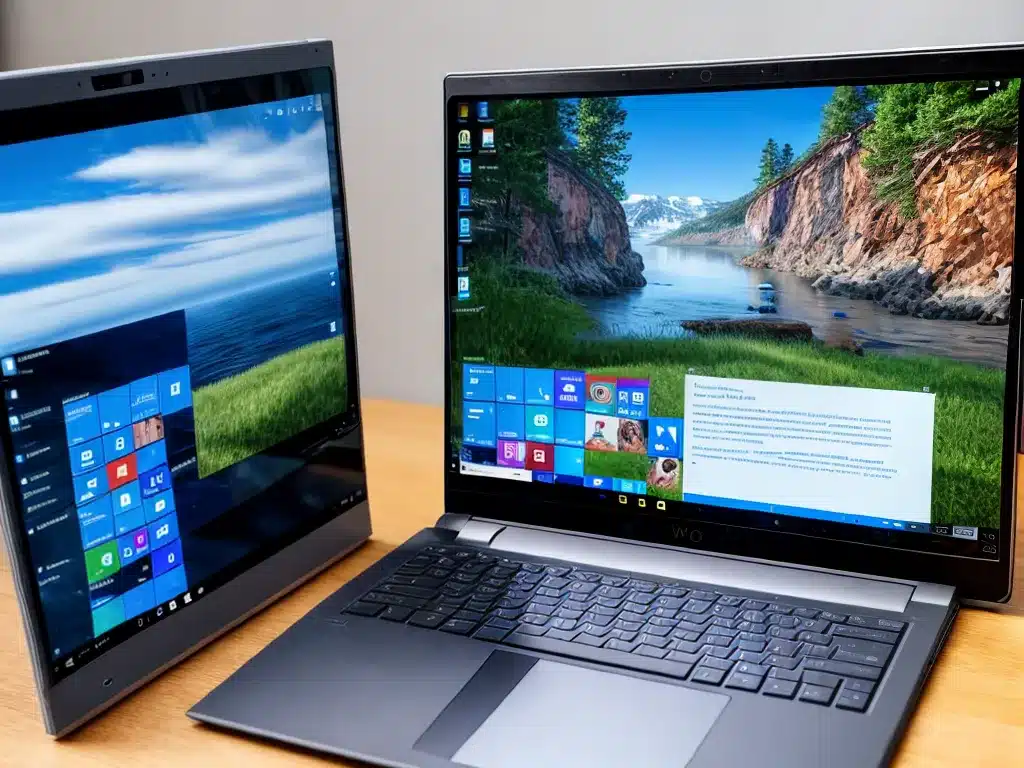
Overview
Windows 11 has more stringent hardware requirements than previous Windows versions, meaning many older PCs may not be eligible for an upgrade. However, there are workarounds to install Windows 11 on older hardware. Here’s what to expect if you try installing Windows 11 on an unsupported PC.
Windows 11’s Minimum System Requirements
Microsoft has set minimum hardware requirements for running Windows 11:
- Processor: 1 GHz or faster with 2 or more cores on a compatible 64-bit processor
- RAM: 4 GB
- Storage: 64 GB or larger storage device
- System firmware: UEFI, Secure Boot capable
- TPM: Trusted Platform Module (TPM) version 2.0
- Graphics card: Compatible with DirectX 12 or later with WDDM 2.0 driver
- Display: High definition (720p) display, 9” or greater diagonally
These requirements are more stringent than Windows 10. Most importantly, Windows 11 requires TPM 2.0 and Secure Boot, which many older PCs lack. Microsoft says devices that don’t meet the requirements cannot run Windows 11.
However, computer enthusiasts have found workarounds to install Windows 11 on older, unsupported hardware.
Trying to Install Windows 11 on Older Hardware
The process to try installing Windows 11 on an unsupported PC varies depending on your situation:
Unsupported CPU
- If your CPU is too old, you may be able to modify the registry to bypass CPU checks. However, performance will likely suffer.
No TPM or Secure Boot
- For devices without TPM or UEFI firmware, try using a TPM emulator like TPM.msc. You can also disable Secure Boot in the BIOS.
Older GPU
- Try installing the latest graphics drivers directly from your manufacturer’s website. Some older GPUs work fine with Windows 11 despite not meeting official requirements.
What to Expect When Running Windows 11 on Older Hardware
Here’s what you can expect if you get Windows 11 running on older hardware:
-
Performance impacts – Running on outdated hardware will lead to slowdowns, especially for advanced features like DirectX 12. The experience may be sluggish.
-
Potential stability issues – Without supported hardware, you may encounter crashes, freezes, or bugs during certain tasks. Key features may not work properly.
-
Lack of updates – Microsoft may block you from receiving future Windows updates on unsupported devices. This can limit access to security patches and fixes.
-
No official support – If you run into issues on unsupported hardware, Microsoft may not provide tech support or troubleshooting help. You’ll need to rely on forums/communities.
-
Future incompatibility – As Windows 11 evolves, future releases may completely block unsupported configurations from installing or running properly.
Weighing the Tradeoffs
While installing Windows 11 on older hardware is possible, it requires compromises. Before attempting it, consider if you’re comfortable with potentially unstable performance and missing out on official updates. For many, it may be better to stay on Windows 10 until you can upgrade to supported hardware.
Conclusion
Windows 11 provides a refined user experience, but also comes with stiffer hardware requirements. With workarounds, you can often get Windows 11 running on older PCs, but this route entails some significant downsides. Carefully weigh the tradeoffs first. When possible, running Windows 11 on officially supported hardware is recommended for the best experience.












